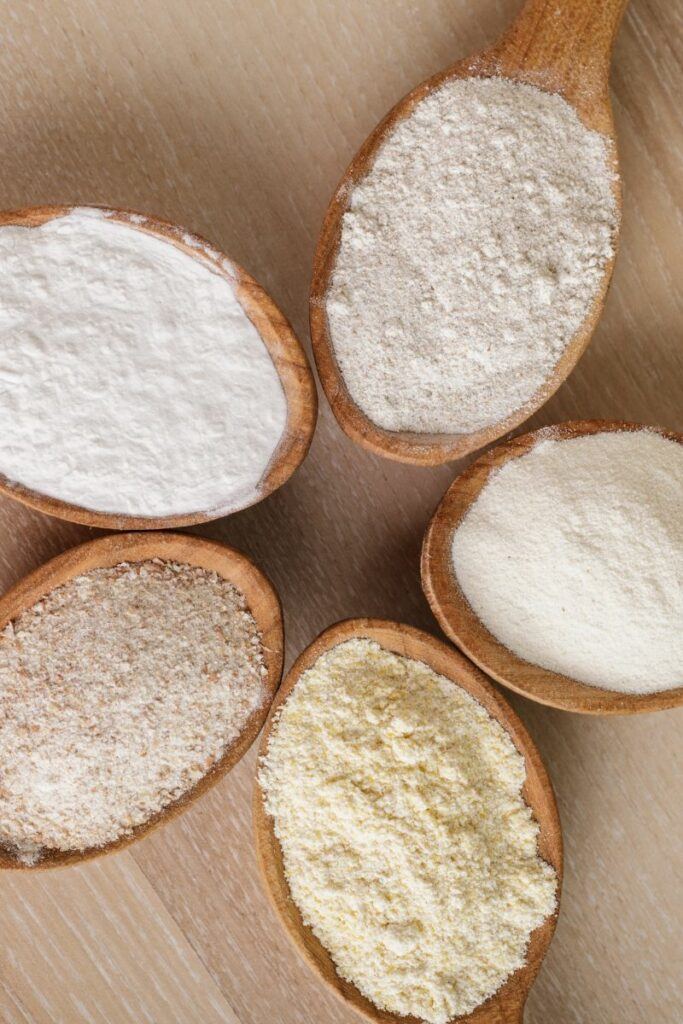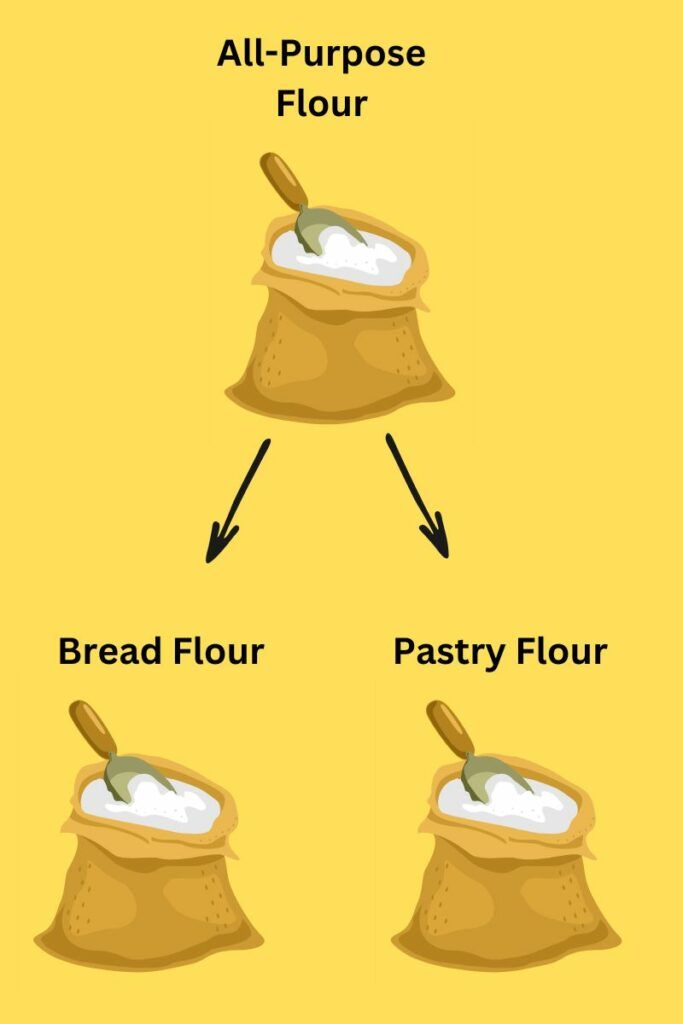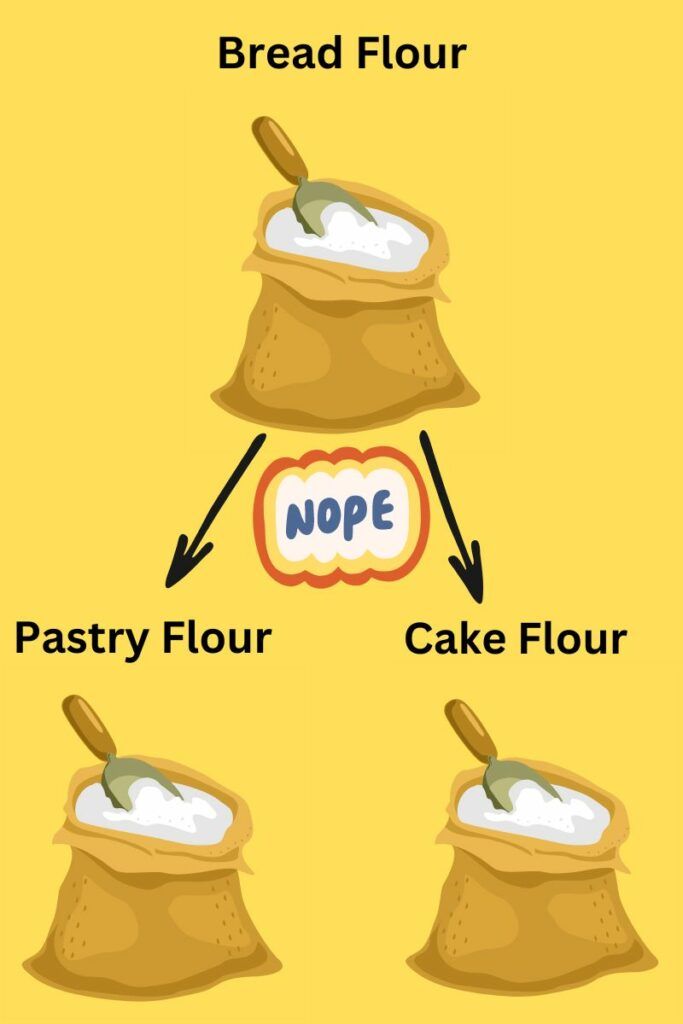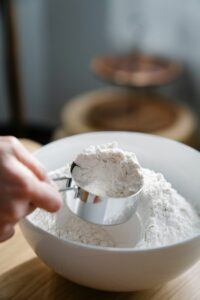Baking should be a fun adventure, but when gathering your ingredients, you find that you don’t have enough of the flour the recipe calls for. Frustrating to say the least. But then you remember you have another type in the pantry, and the question comes to mind: “Can you mix flours if you don’t have enough of one?” The answer is not a simple yes or no. It all depends on what you are baking and the protein contents of the flour. In this article, I will explain the different protein contents of the more common flours and which ones can be mixed together and ones that cannot be mixed. It just might save you a trip to the store.
Can You Mix Flours If You Don’t Have Enough Of One?
It all boils down to what you are baking and the protein content of the flour. You do not want to mix high-protein flour with low-protein flour. That is going to change the texture and crumb of your baked item entirely. For example, if you are making a pie crust, to get that tender, flaky crust, you need flour that is lower in protein. You do not want to add bread flour, which has a high protein content. You will just end up with a tough crust. This is where understanding the different types of flour, their protein content, and uses for each one comes in.
Understanding Flour

Different flours are made from either red wheat or white wheat, soft wheat, or hard wheat. Summer wheat and winter wheat. Then, there are the different parts of the wheat that are used in making flour. The bran is the outer hull and the primary source of fiber. The endosperm is the middle part of the wheat and the largest part of the kernel, and the germ is the inside of the kernel and contains fat.
It can get quite confusing. All you really need to know is the protein content and that high protein flour is made from hard wheat and low protein flour is from soft wheat.
The higher the protein content, the stronger the gluten. And vice versa with the low protein content = low gluten
The higher the gluten, the better the baked good will hold its shape. The lower the protein content, the more delicate and crumbly it will be.
All-Purpose Flour
This flour is the most versatile of the flours, just as its name applies. As far as protein content, it is your middle-of-the-road, so to speak. It is the flour you will see in most kitchens. This flour is used to make gravies, pastries, and breads.
Bread Flour
Bread flour is a high-protein flour and is used to make yeast breads, rolls, and pizza dough. Because of the stronger gluten, kneading the dough creates a gluten web that can better hold the expanding gas bubbles created by the yeast, and this gives you that wanted texture and a stronger rise.
Cake Flour
This is the lightest of all the flours and has the least amount of protein. It is best used in making light airy cakes such as angel food cakes, sponge cakes, or delicate cookies.
Pastry Flour
This flour is lighter than all-purpose or bread flour but stronger than cake flour. It is best used in baked goods that require light but not airy baked products such as pie crust. This flour is strong enough to bind the baked goods together without making them too chewy.
Self-Rising Flour
Not many recipes call for this flour but I did want to mention it because you have probably seen it as an ingredient in older cookbooks. This flour has baking powder and salt already added to it. Adding this to another flour is tricky, depending on the amount of baking powder and salt in the recipe. It will be easier to just run to the store for the flour you need.
What Flours Can Be Mixed Together

All-purpose flour can be mixed with just about any flour. This is the flour that most household kitchens have in the pantry. Many yeast bread recipes do call for all-purpose flour. So if you are making bread and run out of bread flour, then yes, you can add all-purpose flour to make up the difference.
The same with pastry flour. I was making pie crust and ran out of pastry flour. So I just added all-purpose flour. The pie crust came out just fine.
I have also made pie crust using all-purpose flour. Go here to read about it.
What Flours Cannot Be Mixed Together

You cannot mix high-protein flours with low-protein flours. Well, actually, you can, but you are not going to achieve a very good outcome. For example, you are making pie crust, and you find that you ran out of pastry flour, but you have bread flour. You cannot mix the two because of the protein content. The bread flour is going to make the pie crust too tough and chewy. The same with making bread. With the addition of pastry flour, you will not get enough gluten formation to achieve that wonderful chew and rise that you associate with bread.
Final Thoughts
Baking can be an enjoyable experience, but it can also be frustrating when you realize that you don’t have enough of one type of flour. However, as we have discussed in this article, mixing different types of flour can be a reasonable solution in some cases, depending on the recipe and the protein content of the flour. Understanding the qualities of different types of flour and how they can be combined can be very helpful for any home baker. So next time you find yourself in a similar situation, don’t be afraid to get creative and experiment with different flour combinations. You just might surprise yourself with the delicious results.
With so many different flours on the market and to make this article simple I chose to just include the main flours used in baking. It is my hope that you have a better understanding of flour and which ones can be mixed and which ones cannot.
Have you had to mix different flours? Please leave me a comment below with your thoughts and experiences.
And As Always
Keep On Baking
Taianne

I’m Taianne, the owner and operator behind We Are Baking. Baking my first cake at age 11 hooked me on creating sweet treats. Though my interest faded during childhood, it was rekindled when I married my apple pie-loving husband. I love trying new recipes, tweaking classics, and helping others learn the science and art of baking. I started We Are Baking to share tips, tricks, and favorite recipes I’ve discovered over the years. When not in the kitchen, I enjoy spending time with family and friends. My goal is to inspire others to embrace their creativity through baking. Feel free to contact me with any questions!
Taianne@wearebaking.com

